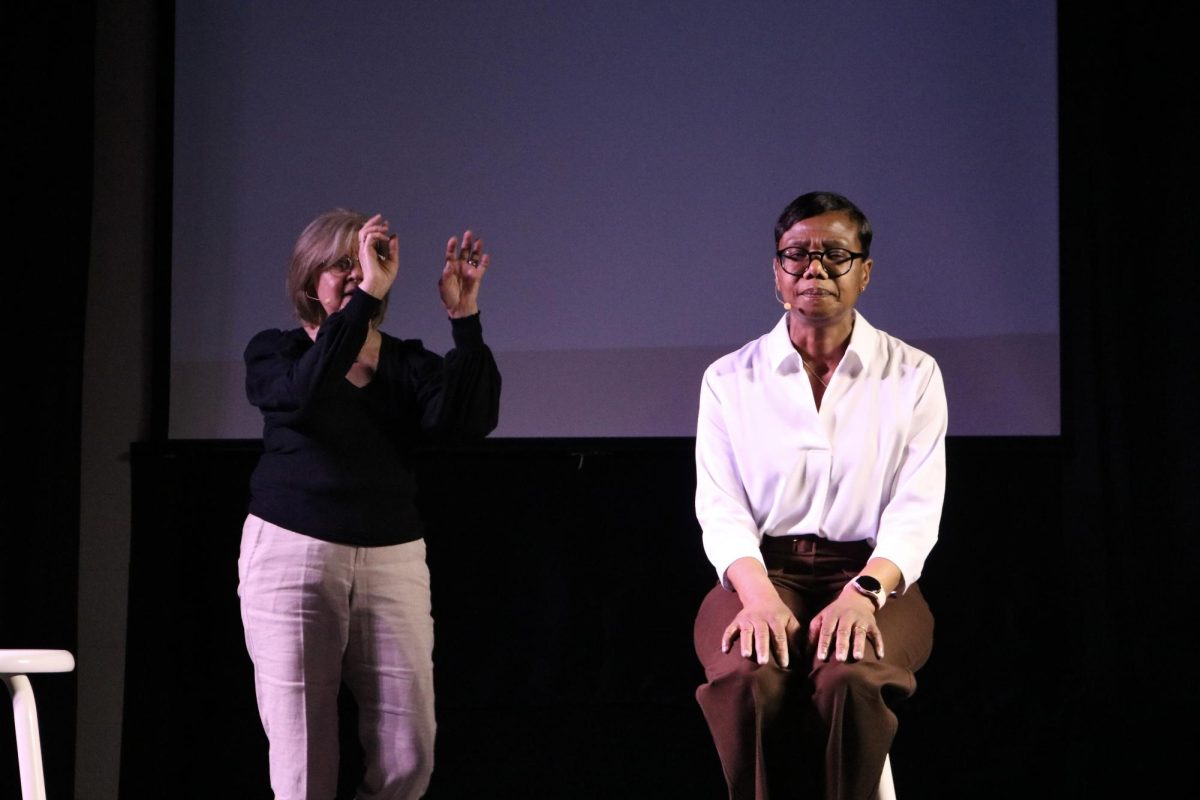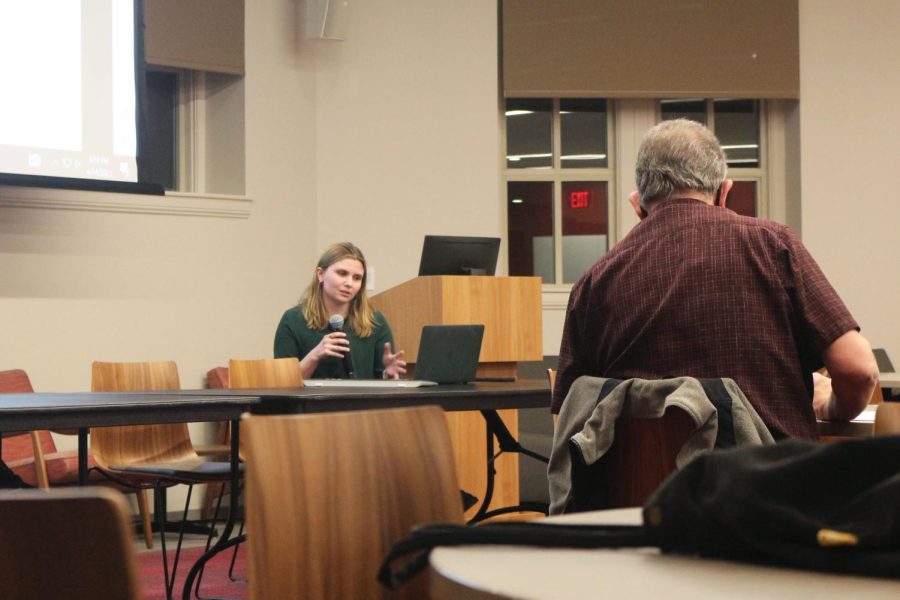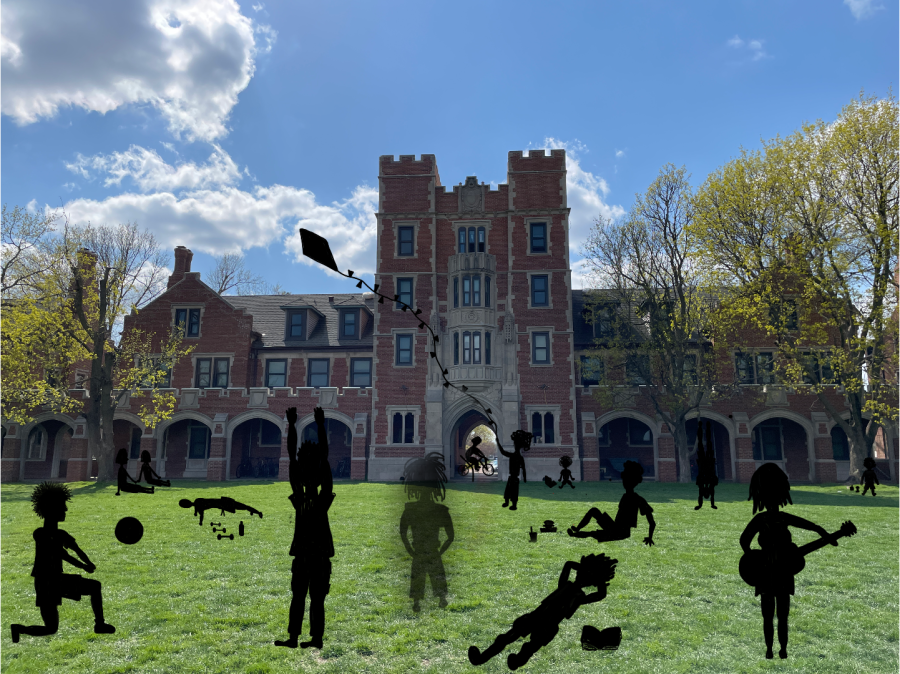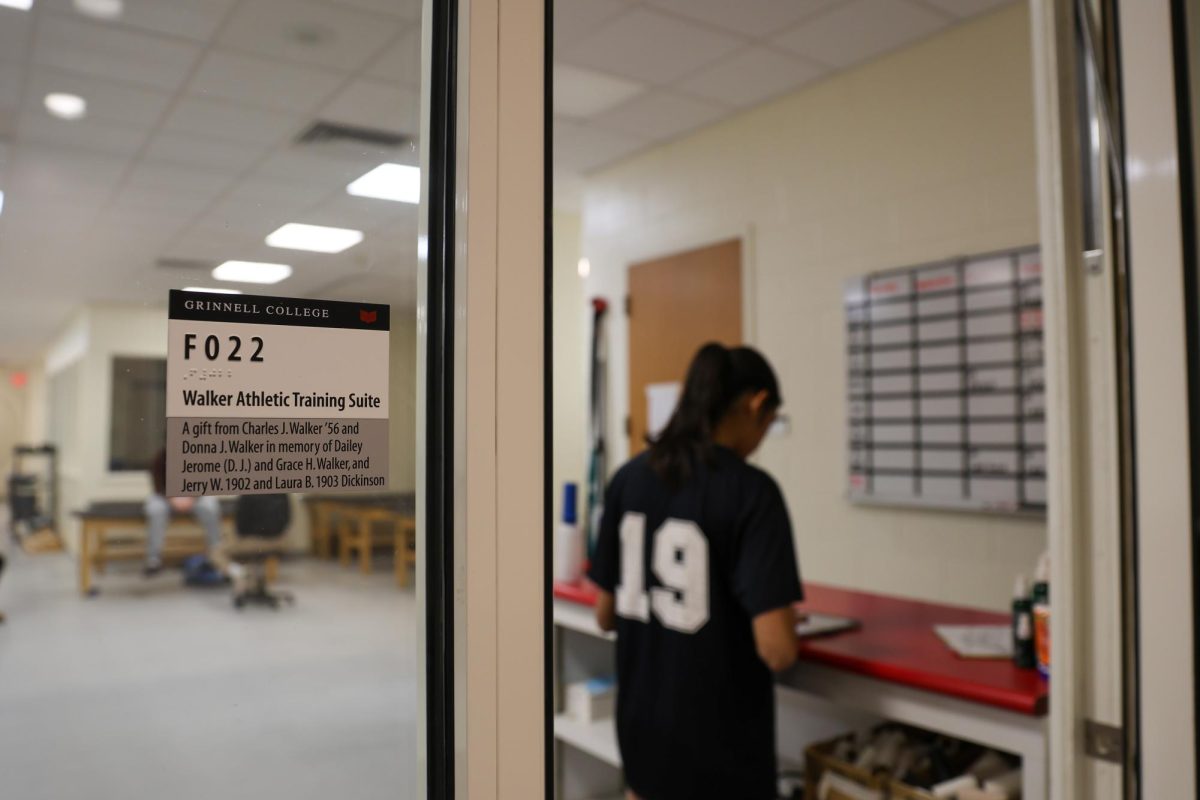
By Candace Mettle
mettleca@grinnell.edu
As required by Equity in Athletics Disclosure Act (EADA), the Athletic Department of the College released The Report on Athletic Program Participation Rates and Financial Support data to all current students via email.
According to the report, Grinnell spends 69,177 dollars on men’s teams and 33,784 dollars on women’s. In other areas of athletics, such as coaching salaries and money spent per student, the numbers are closer.
The report is intended to make students aware of how the College achieves gender equality in athletics, from the student athlete population, to coaches and to budgets. In whole, the report comes out of Title IX, which states that male and female athletes must have equal access to participation, recruitment, scholarships and other benefits if their institution receives federal funding. Although Grinnell is on par with its peer institutions in many categories, the College does poorly on recruitment. So what accounts for the large disparity in recruitment funds?
Ben Cooprider, assistant athletic director and assistant baseball coach, offered some explanation for the differences.
One of the key reasons is due to how the College generated the report. Recruiting expenses come in two ways: through the money set aside by the College for athletics and from money raised by alums and current student athletes.
“In years past this has been a much closer alignment in money, but this year one of the things that we polled was any designated gifts to recruiting purposes and allocated that in [recruitment] and not in others,” Cooprider said. “We have a number of men’s programs that have a much longer history than our women’s program and that’s not the fault of our women’s programs.” After all, Cooprider pointed out, the women’s team have had a very successful run in the last few years as their records continue to improve.
Because of the men’s teams’ longevity, the connections established by former players and coaches are believed to run more extensively than the women’s, resulting in the disparity in gift money. The athletic department has begun to delineate plans to remove the disparity between funds.
“We don’t want to remedy it by lowering the amount of money spent by the men’s teams; we in fact want to raise the amount of money,” said Cooprider. “I know it will be something that [Andy Hamilton] will be taking up with people in trying to supplement the women’s budget because they don’t have the designated gift funds readily available as some of our men’s programs.”
Cooprider believes that with a new athletic administration headed by Andy Hamilton, the College as a whole will improve its Title IX record.
“[Hamilton] is a great person to tell the story of Grinnell athletes,” Cooprider said. “He’s an alum, he taught [and] he coached two women’s sports — basketball and tennis — so he understands the changes we need to make.”
Since he began his new position, Hamilton has met with other members of the department to address the College’s Title IX failures. As a result, the department has hired a Title IX consultant to conduct an independent review, launched and gender equity task force overseen by head swimming and diving coach Erin Hurley and have started an internal department review, which will lead to an external review done by representatives from the College’s peer institutions. Hopefully the efforts will explicitly show what other areas the department needs to be improved on in time for the next review.
The College must follow one of three of Title IX’s core requirements: providing athletic opportunities for all genders, having athletic population reflect the population makeup of the student body and complying with demonstrated needs of underrepresented athletes. In this case, the underrepresented group is women. Like most institutions, the College complies with Title IX through meeting demonstrated need among women athletes. However, according to Andy Hamilton, there are 13 “laundry lists” of standards that must be met in order to prove full compliance with the third requirement of Title IX.
Recently, the athletic department has begun to poll all student athletes to determine how players feel about their time here at the College, specifically if they believe the College has been fully committed to its progressive ideas to equality and of course, to see if the College has met its chosen Title IX requirement.
“Within the sports that we have, we just want to make sure that we’re covering demonstrated need,” Hamilton said. He is confident in that the College does meet Title IX standards since coaches have not expressed dissatisfaction with their recruiting resources and students have not advocated for additional sports teams or other changes. However, there is always room for improvement.
“I want our coaches to recruit at their optimal levels,” Hamilton said. “We want to get student athletes that can excel at [the College].”
Hamilton does admit that rosters across all sports, regardless of gender, could be increased. To get more student athletes however would entail increases in the athletic department staff. As an experiment, the department has offered a post-baccalaureate position for cross country and track, which has proven to be a success in getting more student athletes who are top athletes and students.
“If we can make sure that our budgets are filled and do better in recruitment, we could in fact have more women student-athletes,” Hamilton said.
For female student athletes currently here, there are campus organizations that aim to foster strengthening their presence. Head women’s softball coach Amanda Reckamp created the Female Athlete Leadership Series (FALS) in 2012 with head women’s soccer coach Kirsten Koester to encourage athletes to become confident in their leadership abilities. Both coaches were inspired to create this organization after attending a NCAA-sponsored women’s coaching academy. The event was created offer women, a minority in the coaching world, a multitude of networking, professional development and other opportunities to their underrepresented group.
“I kind of wanted to go a little further and offer that same opportunity to [the College’s] female athletes,” Reckamp said. “And so we started FALS. It’s basically a workshop once a month, bringing female athletes in to strengthen the women’s athletic community, to come in a shared experience of being female athletes and troubleshoot and discuss any issues that come up on our teams and kind of problem solve … how to become better leaders in real situations within those teams.”
Once a month, the members of FALS meet to discuss various topics, such as leadership development and failure recovery conflict management. To be a part of FALS, women athletes must be recommended by their coaches. The four years that it has been a part of the College has been a success, in Reckamp’s opinion. The athletic department has been nothing short of supportive, and this year’s group has expressed greater interest in solidifying FALS’ presence. In turn, the athletes have grown confident in their leadership abilities and thus team culture surrounding the women’s sports have improved substantially.
“Sometimes I think that the people in that room aren’t sure where or how to make an impact, but hopefully these sessions empower them to have a conversation to hold a teammate accountable and to know that they have the skills and abilities and to know that it’s okay to do those kind of things,” Reckamp said.
As a coach, however, Reckamp believes that she has not felt like the department has failed to meet her goals.
“I take advantage of the lots of recruiting opportunities available,” Reckamp said. “Some of them that are beyond my given budget line, so I take advantage of several academic recruiting showcases. The administration has been nothing but supportive of me finding opportunities to recruit top-level student athletes to come play softball here, so … I don’t think I’ve been hindered by a budget, [and] I don’t feel like I don’t have the same opportunities regardless of gender and sport to recruit top-level athletes and students.”
Hanna Kessel ’19, a women’s basketball and track student-athlete, is one of the newest FALS members.
“I expected to come out of it with a kind behind the scenes look at what leadership means, not only to athletes on their teams but to coaches and what they expect of leaders on their teams,” Kessel said.
In light of the College’s current Title IX violations, Kessel hopes that FALS will take on a more central role in the discussions on how to solve them.
“I definitely think that FALS is an important organization to work with the groups that are trying to respond to these disparities because like FALS has got representation from all the female teams on campus,” Kessel said. “[FALS] can represent a collective voice that can discuss all those overarching issues that we are experiencing as an athletic department. FALS’ role in this process has been pretty limited and it should be increased definitely.”
Kessel, however, is skeptical if anything will come out of it. As she pointed out, to even begin to work on changing the dynamic between male and female athletes, the students must be aware of the inequality.
“When they handed out [the survey], one of my teammates was giving out the cards and we wondered what are we supposed to write and then she started listing off the things in which things weren’t equal,” Kessel said. “Then all of us started going, like, wait a sec, yeah, that’s not all that fair! So it’s as if as in the moments when those stuff are happening you get a little ticked off, but we hadn’t been musing over it as a team until that moment. I can’t imagine that if the women’s team had to collectively get together to talk about it, that the men’s team do.”
Although she trusts in Hamilton’s ability to work actively to achieve gender equality within the athletic department, Kessel is not sure if her efforts will actually come into fruition. Many colleges struggle to fulfill these Title IX requirements and in their efforts to do so, have let down some student athletes.
“Do you add another team, [or] do you make the women’s teams have more players? Those are two things that are unrealistic to ask for,” Kessel said. “There are just not a lot of sports you can add. Then there’s a disproportionate members of teams so it’s really hard in allocating funds proportionally well. A team of 14 players against a team of 25 basketball players do not need the same amount of funding, numbers wise.”
Even current players could be affected by efforts to comply with Title IX. Cooprider and Reckamp are adamant about recruiting athletes that are not only outstanding in their sport, but also can thrive in a prestigious school.
“As a basketball player, I don’t want to have 25 players,” Kessel said. “It’s less playing time for me — I think it’s absurd that the men’s [basketball] team has so many players! But I also don’t want to take those positions away from male athletes.” Kessel pointed out how colleges have, for example, been removing wrestling from varsity competition as a way to follow Title IX.
As well, Kessel stressed that it partly depends on the student body to voice their dissatisfaction. One of the elements of Title IX is that colleges must meet the demonstrated demand for athletic participation. That entails working towards a women’s lacrosse team, for example, if students advocate for it.
Throughout the year, there will be opportunities to discuss this aspect of Title IX. It is important for the student body to participate in these conversations for a few reasons. Students like Kessel were only knowledgeable of the College because of recruitment. The athletic community makes up a sizeable percent of the student body population and thus contribute to the legacy of the College. Given the College’s progressive image, it will be interesting to see how the College tackles gender equity and Title IX in athletics.
























































Evie • Dec 15, 2016 at 2:40 pm
I have a few comments to be made here. One, if there any other athletic programs at a college in the US period that is more keeping in line with gender equity than Grinnell tell me, regardless of the real issues raised. That is also more of a comment about all of those other schools. Two, not only has Andy Hamilton coached women’s sports but he also was a football and men’s basketball coach. That, as well as being an alum I believe provides him an almost unique perspective on athletics at Grinnell and its role. Three, as for recruiting the thing about Grinnell, and this has always been the case, is that it has never had to rely upon incoming athletes to help buttress enrollment, and thereby tuition revenue. That is one of the reasons that rosters, especially in football, has always been low compared to the other schools in the Midwest conference. Many of the other colleges in the Midwest Conference, in the past at least have relied on athletes who are willing to show up as sources of revenue that helped keep their institutions afloat.. Monmouth College at one point in the late 1980’s had only 600 total students but more than 100 players on the football team, all paying customers.. Grinnell has also always had a very narrow demographic to recruit from. Students who are athletically capable of playing Division III sports, have the proper grades and SAT scores, have the intangibles for what Grinnell wants in a student, who can thrive within the Grinnell culture and is willing to come to rural Iowa. Because Grinnell is also going against Macalester, Carleton, Earlham, Oberlin and the likes for that same set of students. Its tough. Also, lastly, the student who said that “Its absurd” that the basketball team has so many athletes doesn’t understand Dave Arsenault’s system. Just saying.